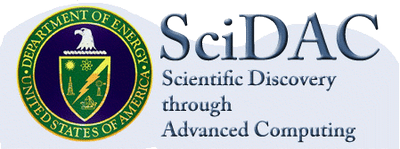About
The central goals of nuclear physics are to unravel the basic constituents of matter and understand how they interact to form protons, nuclei and the exotic forms of matter that were created during the Big Bang and that exist inside neutron stars. The 2015 Nuclear Science Advisory Committee Long Range Plan outlined a broad program to address these goals. On the one hand, nuclear physics experiments at the JLab 12 GeV upgrade, the Brookhaven National Laboratory RHIC program, the Facility for Rare Isotope Beams, and a future Electron Ion Collider to be constructed at BNL in partnership with JLab will help answer a range of fundamental questions that bring us towards these goals. On the other hand, theoretical studies support these experiments and extend our understanding of their results, allowing us to peer ever deeper into the nature of matter. These latter theoretical studies encompass a number of grand computational challenges -- in this proposal, we address that posed by computations of the strong interactions encoded in Quantum Chromodynamics (QCD), using the techniques of Lattice QCD.
In collaboration with the SciDAC-5 Institutes, our project will carry out a dedicated software development effort focussed on the computational difficulties in hadron spectroscopy, the partonic structure of hadrons and nuclei, and properties of the quark-gluon plasma that will maximize the impact of the nuclear physics experimental program and enable new insights into QCD dynamics.
|

